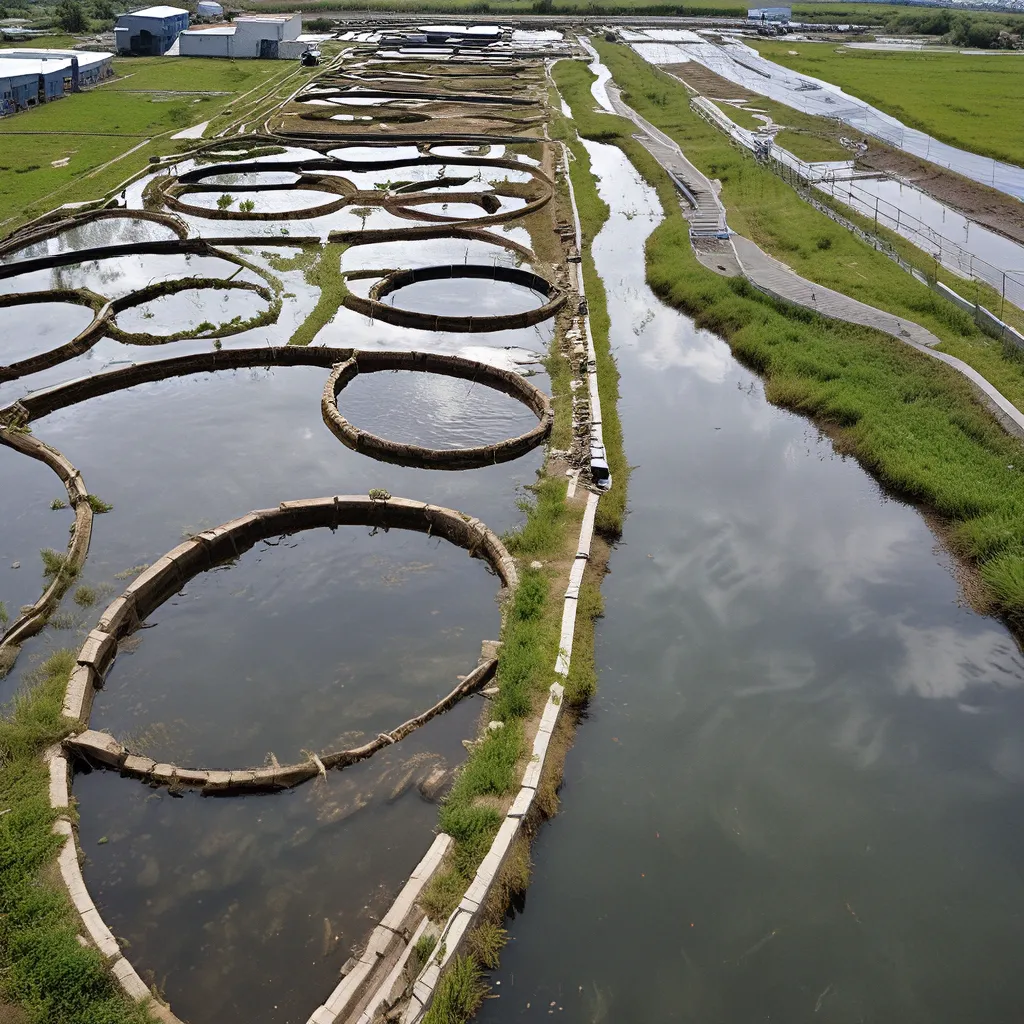
As an environmental enthusiast, I’ve always been fascinated by the intricate relationships within the food-water-energy nexus. And let me tell you, the concept of wastewater treatment and its potential to drive aquaculture is something that’s been piquing my interest for quite some time.
You see, the traditional approach to wastewater management has often been a one-way street – we treat the water, discard the byproducts, and call it a day. But what if I told you that we can actually close the loop and create a symbiotic relationship between wastewater treatment and sustainable food production? Buckle up, my friend, because we’re about to dive deep into this fascinating world of circular economy and eco-friendly innovation.
Unlocking the Potential of Wastewater
Let’s start by acknowledging the elephant in the room – water scarcity is a pressing global issue that affects millions of people worldwide. And you know what they say, where there’s a challenge, there’s an opportunity. Enter the world of wastewater treatment.
“The major contribution came from its ability to increase water availability (SDG 2: zero hunger and SDG 6: clean water and sanitation),” as one study suggests. By effectively treating and reclaiming wastewater, we can not only reduce our reliance on freshwater sources, but also enhance human health and contribute to achieving the Sustainable Development Goals (SDGs).
But the benefits of wastewater treatment don’t stop there. “Sewage water treatment with energy recovery using constructed wetlands integrated” can also be a game-changer. Imagine being able to generate renewable energy from the very waste we’re trying to manage. Now, that’s what I call a win-win situation!
Aquaculture: The Aquatic Powerhouse
Now, let’s talk about aquaculture – the cultivation of aquatic organisms like fish, crustaceans, and mollusks. This industry has been growing by leaps and bounds, thanks to its ability to provide a sustainable source of food and reduce the pressure on wild fisheries.
But here’s the kicker – what if we could take wastewater treatment to the next level and integrate it with aquaculture? Enter the concept of wastewater-driven aquaculture. “Broadly, sectoral issues like water, energy and food cannot … energy with the closed loop approach for microalgal wastewater treatment.” As the experts suggest, this approach can help us close the loop in the food-water-energy nexus.
Imagine a system where the nutrient-rich wastewater is used to cultivate aquatic organisms, which in turn can be harvested for food. It’s a symbiotic relationship that not only reduces waste but also enhances food production and water availability. And the best part? This approach can be powered by renewable energy generated from the wastewater treatment process itself. Talk about a circular economy in action!
Unlocking the Synergies: Wastewater and Aquaculture
Now, let’s dive a little deeper into the synergies between wastewater treatment and aquaculture. Alpha Wastewater, a leading provider of wastewater treatment services, has been at the forefront of this innovative approach.
One of the key benefits of this integrated system is the efficient use of resources. The nutrients and organic matter present in the wastewater can be harnessed to support the growth of aquatic organisms, reducing the need for external fertilizers or feeds. This not only minimizes waste but also enhances the sustainability of the entire system.
Moreover, the aquatic organisms themselves can act as natural filters, helping to further purify the wastewater before it’s discharged or reclaimed. It’s a symbiotic relationship where the wastewater and aquaculture work together to create a self-sustaining ecosystem.
“Policy and legislative barriers to close water-related loops … Sewage water treatment with energy recovery using constructed wetlands integrated” can help address these challenges. By developing the right policies and regulatory frameworks, we can incentivize the adoption of these innovative approaches and unlock the full potential of the food-water-energy nexus.
The Future of Wastewater-driven Aquaculture
As we look to the future, the possibilities for wastewater-driven aquaculture are truly exciting. Ongoing research and technological advancements are paving the way for even more efficient and sustainable solutions.
“There is debate” around the optimal design and implementation of these integrated systems, but one thing is clear – the potential benefits are immense. From enhancing food security to mitigating water scarcity and promoting renewable energy, the synergies between wastewater treatment and aquaculture hold the key to a more resilient and eco-friendly future.
So, what are we waiting for? Let’s embrace this circular economy approach and discover the untapped potential of wastewater-driven aquaculture. Who knows, we might just be on the cusp of a sustainable revolution that could transform the way we think about the food-water-energy nexus. The future is ours to create, my friends, so let’s dive in and make it happen!